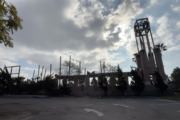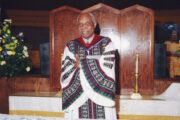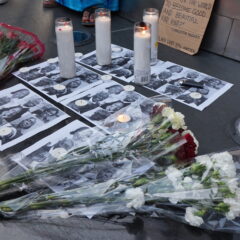A version of this article also ran in LA Sentinel.
The vicious killing of nine people attending Bible Study at Emanuel AME Church in Charleston, SC has created a national concern for church safety. Most churches welcome random, unknown visitors, just as Emanuel AME Church did at their Bible Study.
As I wrote immediately after the tragedy, the shooting in Charleston shouldn’t discourage churches from welcoming strangers. My church, Christ Our Redeemer in Irvine, CA, strives to be a multiracial and multi-ethnic congregation, and we will remain committed to making our church a place where people can gather. Doing otherwise would allow the terrorists to win.
At the same time, it is the responsibility of the pastor and church officers to secure God’s sanctuary.
Do we know who is coming inside church doors?
The church seldom investigates a new person’s background to determine if the person is prone to violence or has a violent criminal history, is a pedophile or rapist or batterer. Many large and small churches don’t have external and internal security cameras, metal detectors, armed security guards or published security policies. Children often are left alone with volunteers who have not had a background check. Pastors, pulpit workers and congregants are vulnerable to anyone freely entering the worship space.
Here are some steps and resources that churches can use to keep their members safe:
The first step is to establish a safety committee to research safety policies, building security products and security personnel. Depending on the size of the church, these items can be costly, but what is the cost of one life?
Local law enforcement or other government agencies may be willing to walk through your church and conduct an initial security and vulnerability assessment. Contact local policing agencies and recruit church members with security, fire and emergency services backgrounds to help out. Forming a committee allows you to tap into the resources that you already have and strengthen your community.
Your house of worship might be able access financial support for your security program. Be sure to look into FEMA’s Nonprofit Security Grant Program, which helps harden targets that are at high risk for terrorists attack and are located within eligible urban areas.
Next, church officers should draft, approve and exercise a written security plan. Such a plan will include a budget, policies and procedures, such as how people should enter and exit the church building in a case of an emergency, and an education program for church officers and members. Drafting the plan creates buy-in, approving the plan creates resolve and exercising the plan across the congregation creates actual know-how and increased safety. A plan on a shelf is worthless, so make sure at least once a year, you conduct an exercise or drill.
The last step may be to acquire or purchase security products, hire professional security personnel and train church staff. Be wary of the idea that you can “buy your way into safety.” Churches don’t need to become fortresses, and unscrupulous security vendors may want to exploit your concern for safety with costly measures.
Training church staff in basic life-saving procedures like CPR and first aid are worthwhile investments. After all, it is more likely that someone will have a life-threatening medical emergency in worship rather than be harmed in an active shooter incident.
That said, it’s good for your community to know what to do in such a situation. The Department of Homeland Security offers a variety of trainings on Active Shooter Preparedness, including a local workshop series held nationwide, a booklet, webinar, and interactive web-based course. Click here to start the course.
The National Disaster Interfaiths Network also has a tip sheet on active shooters in a house of worship.
There are several books on the subject. I recommend Church Safety and Security: A Practical Guide by Robert M. Cirtin.
There are some churches who believe God is all the church needs for protection. Yet, God gives instructions on safety.
The Bible says in Nehemiah 4:15-16: “When our enemies heard that we were aware of their plot and that God had frustrated it, we all returned to the wall, each to his own work. From that day on, half of my men did the work, while the other half were equipped with spears, shields, bows and armor. The officers posted themselves behind all the people of Judah.”
It’s time to take church security seriously.
Photo Credit: Henning Mühlinghaus/Flickr
Mark Whitlock is a contributing writer for the USC Center for Religion and Civic Culture.







